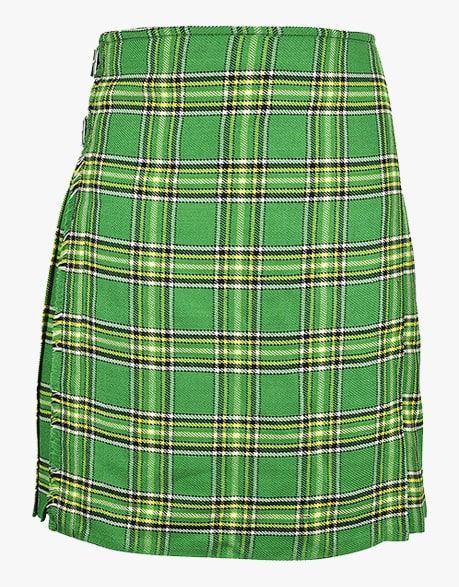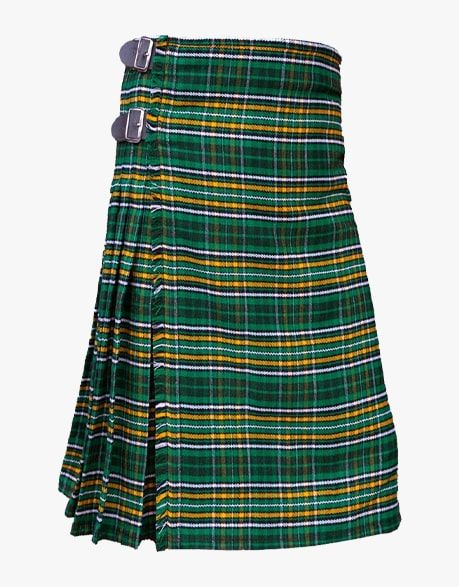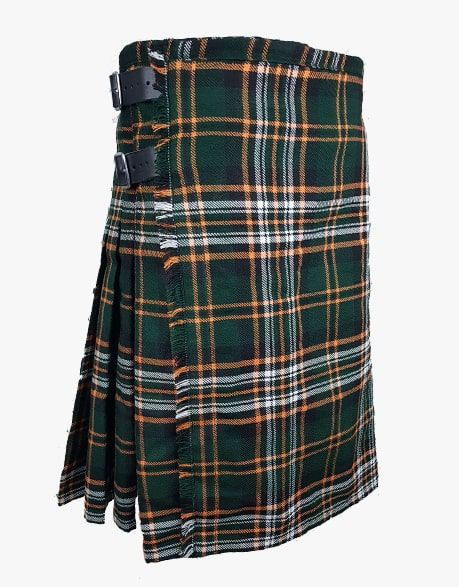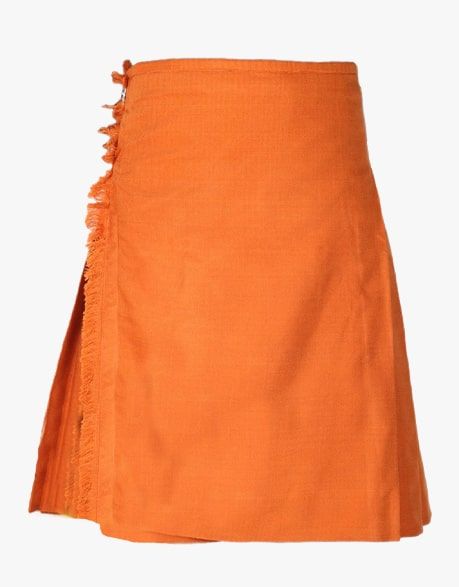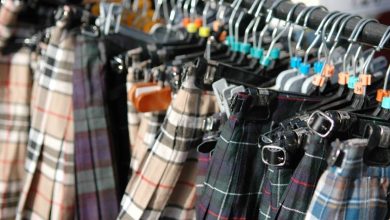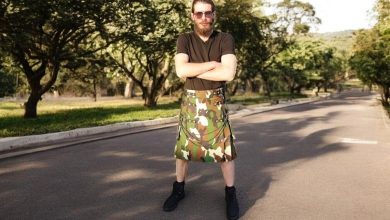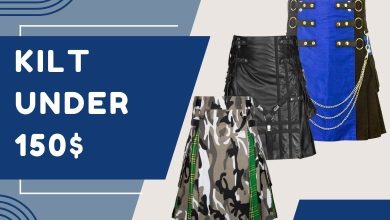A Guide to Irish Kilts: Styles, and Tartans
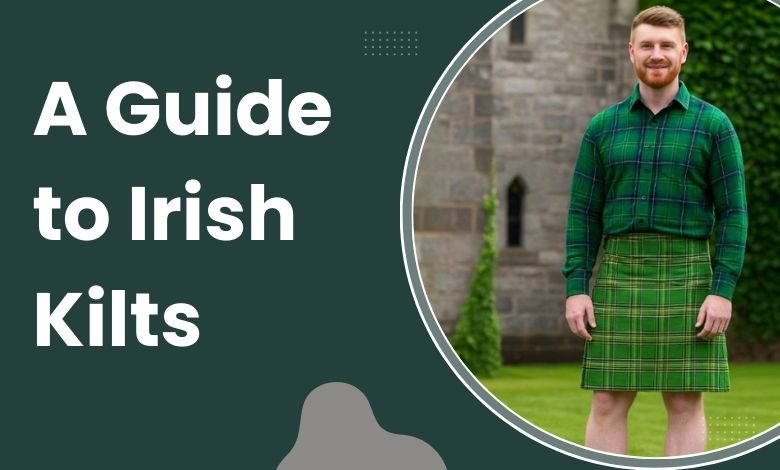
Irish kilts are the counterparts of the Scottish attire but different from them. These differences include unique design, identity, historical, and even the occasional differences. This article aims to inform people about kilts in Ireland and will explain everything: their history, differences from Scottish kilts, components, and etiquette for wearing them. Let’s start our discussion by exploring the origin of Irish kilts.
Table of Contents
ToggleIrish vs. Scottish Kilts
People who do not have much information about the kilts may not spot the differences between Irish and Scottish men’s kilts. In reality, both of them are different from each other in their history, design, colors, purpose, and many more things.
Comparison Table
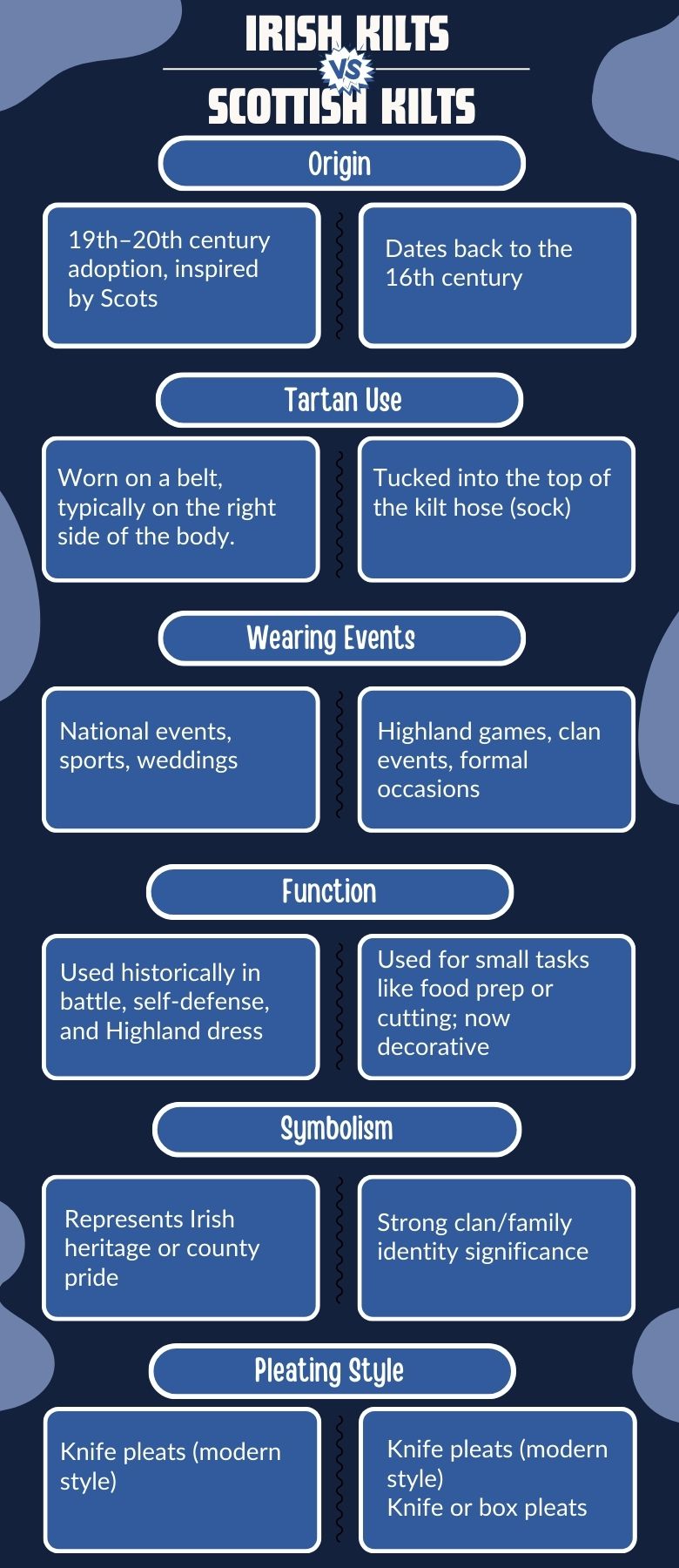
Features | Irish Kilts | Scottish Kilts |
Origin | 19th–20th century adoption, inspired by Scots | Dates back to the 16th century |
Tartan Use | Often county-based or solid colors | Clan-specific tartans are traditional |
Wearing Events | National events, sports, weddings | Highland games, clan events, formal occasions |
Accessories | Simpler; sometimes lacks sporran or sgian-dubh | Traditional full set incl. sporran, belt, etc. |
Symbolism | Represents Irish heritage or county pride | Strong clan/family identity significance |
Pleating Style | Knife pleats (modern style) | Knife or box pleats depending on period/style |
Components of the Full Irish Kilt Outfit
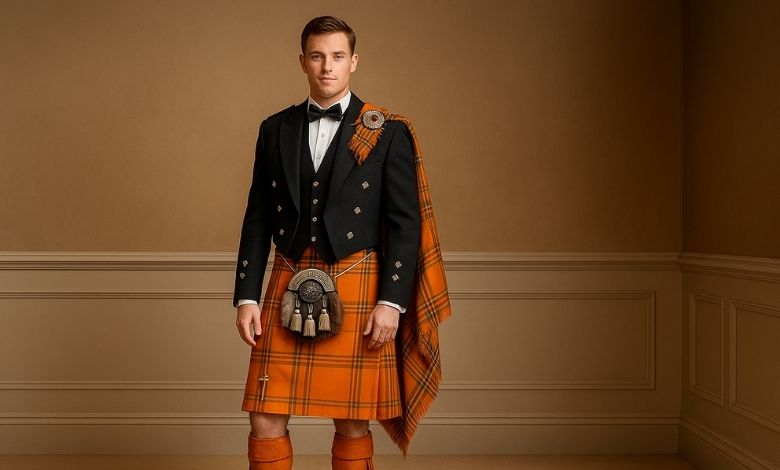
A common difference between Irish and Scottish kilts is the number of accessories. Irish people usually attach a limited number of components compared to the other ones. Below are some components that are essential parts of the attire.
Saffron Kilt
Kilts, undoubtedly, serve as the primary part of any dress regardless of the country. Irish people often use solid-color tartans such as saffron, the most notable one. Wearing saffron is an effective way to promote the Gaelic revival movement.
Irish Kilt Jackets and Shirts
An interesting fact about Irish kilts is their affiliation with formal occasions, and that’s the reason they are not versatile like Scottish kilts. Similarly, the popular jackets to wear in Ireland are Brian Baru (resembling Prince Charlie Jackets) and Kilkenny (like Argyll Jackets). Therefore, Ghillie/Jacobite shirts are common to wear.
Footwear and Socks
Accurate footwear and legwear are integral parts for the completion of Irish dress. The traditional shoes to pair are Ghillie Brogues with tartan hoses. People mostly dress up in saffron, khaki, green, or cream colors to represent their country and Celtic traditions.
Accessories: Brooches, Belts, and Sporrans
Regarding the other accessories of the Irish outfits, sporrans are the common ones. They usually have Irish symbols such as shamrocks or other Celtic knots. Likewise, belts are essential for a secure fit, representing tradition with buckles. In the same manner, brooches like the Tara brooch and half-ring brooches are worn traditionally.
Occasions and Etiquette
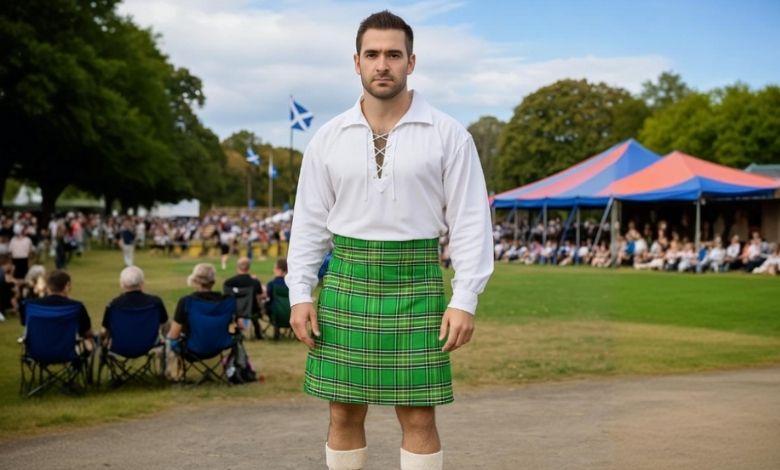
Unlike Scottish kilts that are associated with all types of settings, Irish kilts are worn at formal occasions only. Therefore, the ways to wear a kilt in several events differ a bit. Below are some events and tips to dress up in kilts.
Wedding and Other Formal Events
Irish wear kilts as a statement of pride and cultural identity at various formal events such as weddings and Highland games. Grooms often wear their county tartan or saffron kilt with Brian Baru jacket. Some accessories such as sporrans and brooches are crucial to complement the ensemble. In addition to providing elegance, they also pay homage to Irish ancestry.
National Holidays and Festivals
Kilts help to appraise ancestors at weddings and they are top choices for cultural festivals such as St. Patrick’s Day and Celtic festivities. Solid-colored kilts with Irish-themed brooches and ribbons are a priority at these occasions to showcase cultural pride.
Military Dress Uniforms
Irish Defense Forces and military bands often wear kilts as part of their dress uniforms. The saffron kilt, paired with formal jackets and high socks, represents honor and national pride. This attire not only reflects discipline but also revives and preserves Ireland’s rich culture.
Choosing the Right Irish Kilt
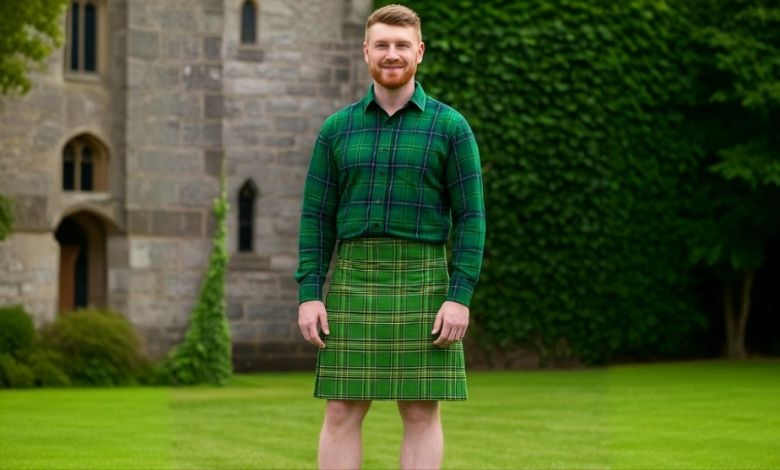
Wearing an Irish kilt is exciting and fun if you have well-chosen apparel. Therefore, selecting an ideal kilt is neither a difficult nor a straightforward process. You only need to know a few things, and missing any of them can ruin the purpose of donning a kilt.
Measuring for a Proper Fit: When choosing a kilt, do not underestimate the proper fit. Ensure you get your measurement with the help of any companion.
Custom vs. Off-the-Rack Options: The next important thing is deciding between a customized kilt or the one available in the store. We suggest you go with a personalized one, as it fits accurately and the makers use the fabric that you suggest.
Budget Considerations: Understanding your budget helps you determine elements, such as the material, the tartan design, and whether a machine-sewn or hand-sewn kilt is necessary.
Irish Tartans and Their Meanings
Tartan is the most common fabric used to make kilts. All the patterns in it have specific meanings. Irish tartans usually represent the following aspects.
County Tartans: Irish tartans are county affiliated, and every pattern describes the nature of people from the native county.
Family/Clan Tartans vs. Modern Creations: Some people in Ireland wear family tartans, even though their patterns are regional ones.
Color and Pattern Symbols: Irish tartans usually are often associated with Celtic or Gaelic traditions, while their colors represent nature, traditions, and the identity of wearers.
- A popular color there is green that represents Ireland’s lush scenery, sense of patriotism, and association with St. Patrick.
- Another notable shade in Irish tartans is blue, which reflects ancient Irish aristocracy and loyalty and serves as a traditional hue.
- Gold is a symbol of warmth, prosperity, and Ireland’s rich cultural heritage.
- Red is a color associated with courage, tenacity, and the sacrifices made by Ireland in its history.
- Black symbolizes the Irish people’s power, tenacity, and rich cultural heritage.
Controversies and Misconceptions
- People consider kilts to be Scottish apparel only, while Ireland is the second-biggest kilt-wearing country.
- Saffron kilt is the first important kilt color in Ireland, but many people disagree with it.
- Many oppose the commercial exploitation of Irish symbols, including harps and shamrocks, on mass-produced kilts that aren’t historically accurate.
- There has been discussion on the historical foundation, and some consider the 1990s to be the authentic era of Irish kilts.
- Some say that Irish tartan is associated with clans. In reality, this point is a controversy.
Irish Kilts You Should Consider Buying
Where to Buy Irish Kilts
Now that you are familiar with different aspects of the Irish kilt, it’s time to inform you about a reliable store where you can buy an Irish kilt for yourself. Online and physical markets have thousands of stores, but we will suggest you explore Irish kilts at The Utility Kilt. We offer every service that you expect from us. We are budget-friendly, and we ensure customizing every kilt to fulfil your needs. If you have any query regarding our services or have a confusion regarding the sizing, our experts are always ready to assist you. Consult our team via the chat box or call us at +19179057245.
FAQs About Irish Kilts
Do Irish kilts have pleats like Scottish kilts?
Yes, kilts in Ireland have pleats but not like the Scottish kilts that have pleats on the back. Irish kilts usually have pleats on one side.
What does the color saffron represent in Irish kilts?
Saffron has a deep association with Irish culture. In fact, it was the color adopted by Irish regiments in the British army. From then on, this particular shade became popular and is still used widely in Ireland.
Can women wear traditional Irish kilts, or are there separate garments?
Kilts are not a male garment anymore, and women wear the same tartan that men wear. Therefore, design or size differences may be the essential things to note.
Do Irish universities or schools ever use kilts in uniforms?
Irish students wear kilts on events taking place in schools and universities as formal attire but not as uniforms.
